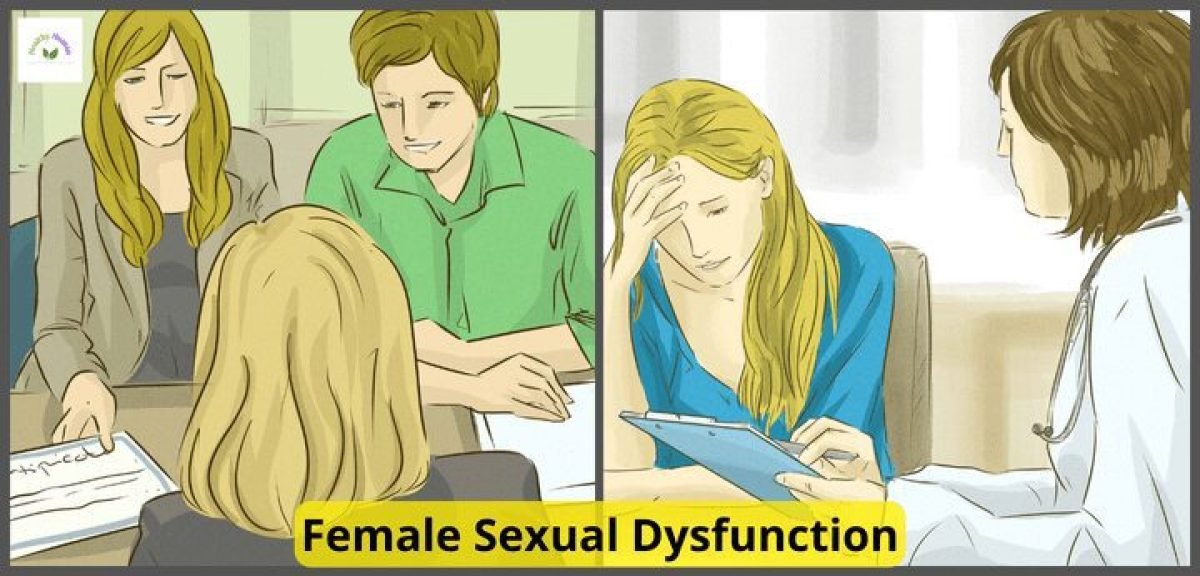Healthy sex life is important at any age however a change in desire or painful intercourse can alter a sexual activity of a woman. In some cases, as women age, their sex life seems to lose its spark, and their body becomes less responsive. They may feel they are not interested anymore.
These issues are becoming a common concern for women. By some estimates, it is calculated that four in ten women have experienced some form of sexual dysfunction. Female sexual dysfunction or FSD is when sexual intimacy for women is not as pleasurable as it once was or it is not enjoyable at all. You are not alone in this. Fortunately, it is a treatable condition.
Categories of Female Sexual Dysfunction

Female sexual dysfunction can be organized into four categories ranging from lack of sex drive to sexual pain. These include:
Low sexual desire
Low sexual desire simply means a decrease in libido, a common term used to describe a sexual desire or sex drive.
Females’ sexual desires naturally change over time. Highs and lows are frequently associated with the start or end of a relationship, as well as major life changes such as pregnancy, menopause, or illness. Some mood-disorder medications can also cause low sex drive in women.
If your lack of interest in sex persists or returns and causes you personal distress, you may have sexual interest/arousal disorder.
However, you do not have to meet this medical definition to take assistance. If you’re feeling bothered by a lack of or a decrease in sex drive, there are lifestyle changes and sexual techniques that can help you get in the mood more frequently.
Sexual arousal disorder
For those with sexual arousal disorder, the desire for sex may be intact but there is an inability to become or maintain arousal or interest during sexual activity. Sexual arousal disorder, a type of sexual difficulty, can occur for a variety of reasons. Some of these have emotional components, like stress and anxiety or relationship issues. Additionally, certain medications, as well as behavioral factors like drinking or smoking, could be at fault. For this, some antidepressants have been started with sexual problems, such as decreased desire or arousal.
An underlying medical condition may occasionally be a factor in the issue. Women with diabetes or multiple sclerosis may experience an arousal disorder associated with their chronic illness because vascular and neurological issues can affect arousal. Age-related hormonal changes may also be involved.
Orgasmic disorder
Orgasmic disorder is determined to be the cause of female sexual dysfunction when there is continuous difficulty in achieving orgasm. Each woman reacts differently to stimulation, both in terms of intensity and type. Less than half of women regularly experience orgasm during sexual activity, despite the fact that most women can experience it when the clitoris—which is the male equivalent of the penis—starts stimulating. One in ten women never experience orgasm, but many still find a sexual activity to be satisfying.
Even when masturbating or when they feel extremely aroused, many women with orgasmic disorders are unable to experience an orgasm. However, the issue is regarded as an arousal disorder rather than an orgasmic disorder if a woman does not experience an orgasm because she is not sufficiently satisfied.
Only when the woman feels distressed by her inability to orgasm is the inability to orgasm considered a disorder. Frustration, resentment, and occasionally a dislike for all things sexual can result from lovemaking without orgasm.
Sexual pain disorder
Pain associated with sexual stimulation or vaginal contact is deemed to be sexual pain disorder. Intercourse pain, also known as dyspareunia, can spoil a couple’s sexual relationship. There is the possibility of negative emotional effects in addition to physically painful sex. As a result, the issue should be addressed as soon as it arises.
If there is insufficient vaginal lubrication, a woman may have painful sex in many cases. When this happens, the pain can be relieved by the female becoming more relaxed, increasing the amount of foreplay, or using a sexual lubricant.
Conditions
In some cases, a woman may have painful sex if one of the following conditions exists:
- Vaginismus- This is a fairly common condition. It is an involuntary spasm of the vaginal muscles, which sometimes has a fear of being hurt.
- Infections of the cervix- Yeast infections are common among these conditions. Cervical complications (opening to the uterus). The penis can reach the cervix at maximum penetration in this case. As a result, cervix issues (such as infections) can cause pain during deep penetration.
- Uterus complications- These issues could include fibroids, which can cause severe intercourse pain.
- Endometriosis- This is a condition in which tissue similar to the uterine lining grows outside the uterus.
- Ovarian dysfunction- Cysts on the ovaries could be a source of concern.
- Inflammation of the cervix (PID)- PID causes deep inside tissues to become inflamed, and the pressure of intercourse causes severe pain
- Ectopic pregnancy- A fertilized egg develops outside the uterus during this pregnancy.
- Menopause- The vaginal lining can lose its normal moisture and become dry during menopause.
- Intercourse too soon after a surgical procedure or childbirth.
- Sexually transmitted infections Genital warts, herpes sores, and other STDs are examples of these.
- Vulvovaginal or vaginal injury- A tear from childbirth or a cut (episiotomy) made in the area of skin between the vagina and anus during labor are examples of these injuries.
Also Read:- Sexual Dysfunction & Disorders In Men
Symptoms of Female Sexual Dysfunction

The symptoms of female sexual dysfunction are closely related to the four categories discussed above. It includes-
- Decrease in the desire to have sex or complete absence of that desire
- Difficulty maintaining arousal during sexual activity or lack of arousal despite a desire to have sex
- Inability to achieve orgasm
- Pain associated with sexual contact
Causes of Female Sexual Dysfunction
There are several factors that can contribute to sexual dissatisfaction and dysfunction. These causes tend to be interrelated. Female sexual dysfunction can be caused by:
Physical Conditions
A variety of physical conditions can cause or contribute to sexual problems. These include:
- Arthritis
- Gynecological surgery
- Fatigue, headaches
- Multiple sclerosis and other neurological disorders
- Taking certain medications
Additionally, certain medications, such as antidepressants, blood pressure medications, antihistamines, and chemotherapy drugs, can reduce sex drive and the ability to achieve orgasm.
Hormonal shifts
Changes in hormones, which include chemicals released and affect other parts of the body, can also cause female sexual dysfunction.
- Menopause
- Vaginal length loss
- Reduced lubrication
- Dyspareunia (painful intercourse)
Changes in estrogen levels, such as during menopause, can cause changes in genital tissues and sexual responsiveness. In this case, the skin folds that covered the genital region, known as the labia, shrink and thin, exposing more of the clitoris. This increased exposure can sometimes reduce clitoris sensitivity or cause an unpleasant tingling or prickling sensation. Furthermore, as the lining of the vagina thins and loses elasticity, the vagina becomes narrower. This is especially true for women who do not engage in sexual activity.
Many of these factors can result in uncomfortable or painful intercourse, a condition known as dyspareunia. Any change in estrogen levels during menopause may have an impact on sexual function. Most women, however, continue to have satisfying sexual intimacy.
Psychological and social causes
Emotional difficulties such as untreated anxiety, depression, or stress, as well as a history of sexual abuse during pregnancy, after childbirth, or while breastfeeding, are examples of psychological factors that cause or contribute to sexual problems. You may notice a decrease in sexual desire. You may find it difficult to balance multiple needs and roles, such as job demands, housework, motherhood, and sometimes caring for aging parents.
Additional factors that may contribute to sexual problems include your partner’s age and health, your feelings toward your partner, and your thinking of your own or your partner’s body. Cultural and religious issues may also play a role. Psychological factors may contribute to or result from sexual dysfunction. Regardless of the cause of sexual dysfunction, treatment usually requires further attention to emotional and relationship issues.
Looking for Female Sexual Dysfunction Treatment
Although many women are hesitant to discuss sexual issues with their doctors. It is important to notice that a woman’s sexual well-being is an essential part of her life. During routine visits, doctors may inquire about a woman’s sexual health. Women, on the other hand, should be as open as possible about any problems they are having.
A pelvic examination is required to test for female sexual dysfunction. The doctor will examine the pelvic region for any abnormalities or physical changes that may be interfering with sexual enjoyment. The doctor may also refer you to a counselor or therapist to help you with sexual relationship advice.
Also Read:- What is Genital Herpes, symptoms and diagnosis?
Types of Treatment for FSD

Female sexual dysfunction can be treated in two ways.
1. Non-medical therapy
2. Medical therapy
Non-medical therapy
There are many factors addressed in terms of non-medical treatment.
- Communication with your partner is essential because open and honest communication can improve your emotional and sexual intimacy. There are some couples who never discuss their sex life, while others are less reserved. Over a lifetime, it can be difficult to resolve differences in sexual desire with your partner, and communicating your feelings may be beneficial.
- There are good books available to help you better communicate with your partner about sexual preferences and dislikes, as well as ways to provide feedback in order to meet your sexual needs. Consult your doctor for advice.
- Start making smart healthy lifestyle changes as well. This would entail
- avoiding alcohol
- excessive alcohol consumption
- Smoking cessation
- exercising on a regular basis
- allowing for leisure and relaxation
Treatment
All of these are not only important for your sexual health, but they are also beneficial to your overall health. It is also beneficial in strengthening your pelvic muscles. Some arousal and orgasm issues can be helped by pelvic floor exercises. Kegel exercises help to strengthen the muscles involved in pleasurable sexual sensations. To do these exercises, tighten your pelvic muscles as if you were stopping the flow of urine. However, do not do it while voiding for a count of five. Relax and do it again.
These exercises can be done several times a day. While exercising, your doctor may also advise you to use vaginal weights. You may also want to seek the advice of a sex therapist or counselor who is skilled in addressing sexual concerns and may be of benefit to you whether your condition is due to emotional factors or other factors.
As sex therapists will typically evaluate your specific situation by asking you questions about your sexual identity beliefs and attitudes relationship factors including intimacy and attachment communication and coping styles. And your overall emotional health therapy may include sexual response education and techniques for increasing intimacy with your partner.
Medical therapy
If non-medical treatment for female sexual dysfunction is ineffective, medical treatment should combine. Treating sexual dysfunction effectively frequently necessitates addressing an underlying medical condition or hormonal change that is affecting your sexuality.
Depression or anxiety, diabetes, cardiovascular and neurological diseases, pelvic or abdominal surgery, and cancer are all medical conditions that can contribute to sexual dysfunction. A woman’s hormone levels are vulnerable at certain times in her life, most notably during pregnancy and the postpartum period.
To treat the underlying condition while using hormonal birth control methods, as well as during perimenopause and menopause. Adjusting or changing medications with sexual side effects may be part of medical treatment for sexual dysfunction. Thyroid disorders and other hormonal imbalances enhance treatment for depression or anxiety, strengthening pelvic floor muscles, and addressing pelvic pain
The next step could be to use hormone therapy to treat hormonal deficiency directly. There are three different sources to obtain Hormonal therapy: estrogen, progestin, and androgen.
Estrogen therapy
Estrogens are necessary for the health of vaginal and external genital tissues. Replacing estrogen can improve sexual function in a variety of ways, including increased vaginal tissue tone and elasticity, increased vaginal blood flow, improved lubrication, and a positive effect on brain function and mood factors that influence sexual response. Localized estrogen therapy in the form of a vaginal cream gel or tablet can help with menopausal sexual changes.
Progestin therapy
Progestin therapy is the second hormone replacement therapy. Some clinical studies have found that women taking progestins have less sexual desire and vaginal blood flow. Other studies, however, found that taking progestin in addition to estrogen improved women’s desire and arousal.
There is a need for more research to address these differences and determine whether different progestin regimens, alone or in combination with estrogen and other hormonal agents, may improve sexual function. Progestins are typically used to counteract the effects of estrogen on the uterus rather than to treat sexual dysfunction.
Androgen therapy
Androgen therapy, which includes male hormones such as testosterone, may be a beneficial treatment for hormone deficiency. Testosterone is essential for both male and female sexual function. Although testosterone levels are much lower in women, androgen therapy for sexual dysfunction in women is controversial.
Women who have low testosterone levels and develop sexual dysfunction may benefit from this treatment, according to research. According to reports, testosterone therapy improved libido arousal and sexual thoughts in these women. Other studies have shown that testosterone therapy has little or no benefit for women, and there is currently no standard FDA-approved testosterone preparation for treating female sexual dysfunction.
Testosterone therapy
Testosterone therapy can be applied to your skin as a cream or gel patch. Sometimes testosterone is administered in the form of a pill or an injection. Because the long-term effects of androgen therapy are unknown, possible side effects for women on testosterone therapy include acne, excess body hair, hirsutism, clitoris enlargement, and mood or personality changes such as aggressiveness or hostility. Your doctor should keep a close eye on the person.
There are many alternative treatments available for female sexual dysfunction. Currently, researchers are evaluating the efficacy of drugs approved for the treatment of erectile dysfunction in men, such as sildenafil or Viagra, tadalafil or Cialis, and other drugs, in treating certain types of female sexual dysfunction.
The majority of studies have found little benefit for women, but some have found benefits for women who have sexual dysfunction as a result of antidepressant or anti-anxiety medication side effects.
Tibolone
Tibolone is a drug that is currently useful for the treatment of postmenopausal osteoporosis in Europe and Australia. Women taking the drug experienced an increase in vaginal lubrication, arousal, and sexual desire in a small study. In the United States, the Food and Drug Administration, or FDA, has not approved the use of Tibolone.
Home remedies for FSD
Healthy lifestyle changes can have a significant impact on your desire for sex:
- Exercise- Aerobic exercise and strength training on a regular basis can improve your stamina, body image, mood, and libido.
- Reduce your stress- Finding a better way to deal with work stress, financial stress, and daily annoyances can boost your sexual drive.
- Interact with your companion- Couples who learn to communicate openly and honestly tend to have a stronger emotional bond, which can lead to better sex. It is also necessary to communicate about sex. Discussing your likes and dislikes can pave the way for greater sexual intimacy.
- Make time for intimacy- Scheduling sex into your calendar may appear forced and monotonous. Making intimacy a priority, on the other hand, can help you get your sex drive back on track.
- Make your sex life more interesting- Experiment with a different sexual position, time of day, or location for sex. Request that your partner devote more time to foreplay. If you and your partner are willing to try new things, sex toys and fantasy can help you rekindle your sexual desire.
- Get rid of bad habits- Smoking, illegal drugs, and excessive alcohol consumption can all reduce your sexual drive. Eliminating these bad habits may increase your sexual drive and improve your overall health.
Summary
Female sexual dysfunction is a cause for concern if the symptoms cause you distress or interfere with your relationships. Sexual issues are a normal part of life. If, on the other hand, sexual problems persist or reoccur, failing to address them can exacerbate the problem by interfering with your enjoyment of life or your relationship with your partner. Open communication with your partner can assist you in resolving many issues and increasing your sexual satisfaction.
FSD, or female sexual dysfunction, is a common condition in women. It is actually more common in men than in reptile dysfunction. The cause of FSD depends on a variety of factors and conditions. FSD, on the other hand, is a treatable condition with both non-medical and medical treatment options readily available. If you believe you have FSD, consult your doctor first.




